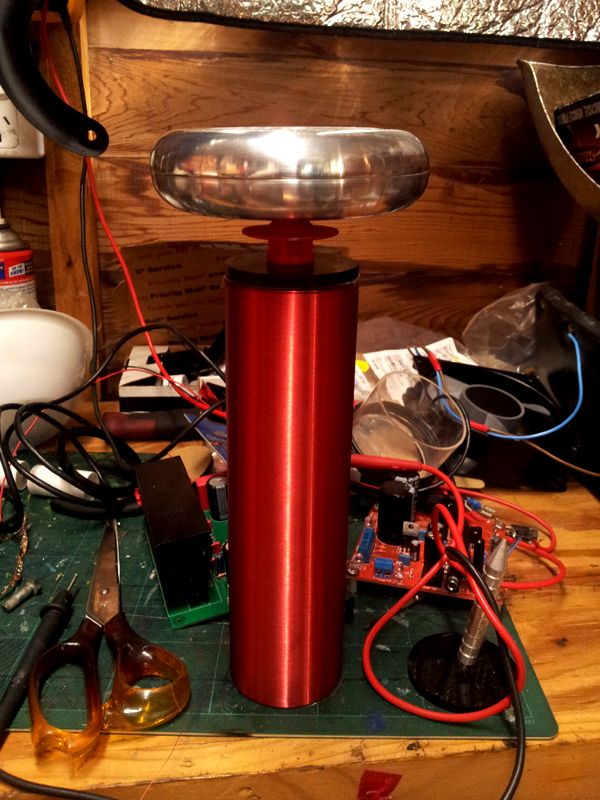Winding jig complete. Test run was the ity bity coil sitting on it. Decided to make a toroid for it. Now I really want it to work! Resonant 1100Khz.
Coil for for the SGTC is 4.25". Received it in the mail from Sig as a packing container for the MMC and ran some numbers with it and it will work out for me. (plus the wife said I'm not aloud to spend money until the baby is here) Good thing my 28 AWG is already in the mail!

Edit: Built a small cap from aluminum foil and used the clear top from a binder as dielectric.
For sure the smallest SGTC I have ever seen though I'm sure one of you will link something smaller and more successful.

Video showing it working. Weak but still neat. Water is there because I was 100% sure I would be putting out a fire. End of the video shows the now dead cap

I guess the dialectic couldn't hold up because there is an internal short. When I showed the wife I had a light bulb a few inches away that lit up and I could draw about 2 inch arcs from the breakout.
Anyone have any recommendations for making a new cap that can withstand out of household materials?
















